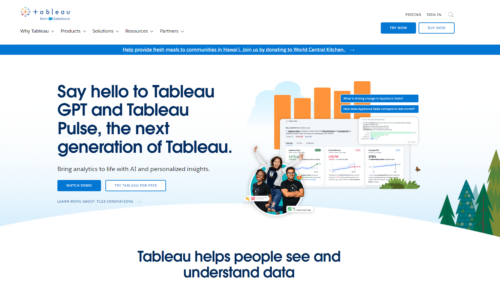What is NLP?
In its simplest form, NLP is when we teach computers to understand and talk like humans. It helps us do things like talk to robots, translate languages, and have conversations with our phones.
Introduction to NLP
ChatGPT hit the world by storm. (One of the most advanced chatbots using natural language processing)
But NLP computer programs have been around for quite some time!
Do you ever wish you could have a conversation with your phone without feeling like you're talking to a robot?

If so, you're in luck. Natural Language Processing, or NLP, is here to make your dreams a reality.
NLP technology is a field of study that focuses on teaching computers to understand and interpret human language. It's what makes it possible for Siri to understand your voice commands, for Google to translate foreign languages, and for chatbots to hold a conversation with you like a real human being. (not like the one above;))
But what exactly is NLP, and why is it important? In this beginner's guide, we'll answer these questions and more.
We'll start with the basics, explaining what NLP is and how it works. We'll then dive into the key concepts of NLP, including tokenization, stemming, and named entity recognition. We'll also explore the various applications of NLP, from chatbots and virtual assistants to sentiment analysis in social media.
If you're interested in learning more about NLP, you're in the right place. Whether you're a developer looking to incorporate NLP into your projects or a curious learner interested in the technology behind language processing, this guide has something for you. So sit back, relax, and get ready to dive into the fascinating world of NLP.
What is NLP?

Natural Language Processing is a branch of computer science that deals with the interactions between computers and human languages. NLP allows computers to process human language.
Thus, understand, interpret, and respond to natural language, making it possible for us to communicate with machines in a more intuitive way.
Definition of NLP and its Applications
At its core, NLP involves creating algorithms and computational models that can process natural language data and extract meaning from it. This makes it possible for machines to understand human language in a way that is similar to how we humans do it.
NLP has a wide range of applications in the real world. It is used in virtual assistants like Siri and Alexa to help them understand our commands and respond appropriately. It is used in chatbots to create more natural conversations with customers. NLP is also used in sentiment analysis, where computers analyze the emotional tone of social media posts, emails, and other types of text.
In detail: How does natural language processing work?
NLP involves a series of steps that allow computers to process and analyze human language data. The first step is tokenization, where the text is broken down into individual words or phrases. Then, the text is analyzed to identify its grammatical structure, including parts of speech and sentence structure. After that, NLP models can perform a variety of analyses, such as sentiment analysis, named entity recognition, and text classification.
Overview of the Different Techniques and Algorithms Used in NLP
There are several techniques and algorithms that are commonly used in NLP. Some of the most popular include:
Stemming and lemmatization: These techniques involve reducing words to their root forms to simplify analysis.
Parts of speech tagging: This involves assigning each word in a sentence a part of speech, such as noun, verb, or adjective.
Named entity recognition: This involves identifying and categorizing named entities, such as people, places, and organizations, within a text.
Sentiment analysis: This involves analyzing the emotional tone of a text to determine whether it is positive, negative, or neutral.
By using these techniques and algorithms, NLP models can analyze natural language data and extract meaning from it, making it possible for computers to understand and respond to human language in a more sophisticated way.
Definition of NLP and its applications
Explanation of how NLP works
Overview of the different techniques and algorithms used in NLP
Key Concepts in Natural Language Processing
Natural Language Processing is a broad and complex field, with many different techniques and methods used to process and analyze human language. In this section, we'll cover some of the key concepts in NLP that are essential for anyone looking to understand the field.
Tokenization
Tokenization is the process of breaking down text into individual words, phrases, or other meaningful units, known as tokens. This is often the first step in NLP, and is essential for many subsequent tasks, such as sentiment analysis, named entity recognition, and text classification.
Stemming and Lemmatization
Stemming and lemmatization are techniques used to reduce words to their base or root forms. This is important for tasks such as text classification and information retrieval, as it helps to ensure that variations of the same word are treated as the same term.
Parts of Speech Tagging
Parts of speech tagging is the process of identifying the grammatical category of each word in a sentence. This is important for many NLP tasks, including text classification, sentiment analysis, and named entity recognition.
Named Entity Recognition
Named entity recognition (NER) is the process of identifying and classifying named entities in text, such as people, organizations, and locations. This is important for tasks such as information extraction, entity disambiguation, and relation extraction.
Sentiment Analysis
Sentiment analysis is the process of identifying and extracting subjective information from text, such as opinions, attitudes, and emotions. This is a key application of NLP, with many practical uses, including marketing, customer service, and social media analysis.
These five concepts are just the tip of the iceberg when it comes to NLP, but they represent some of the most important and widely used techniques in the field. By understanding these concepts, you'll be well on your way to understanding the basics of natural language processing.
Applications of Natural Language Processing
Natural Language Processing (NLP) has a wide range of applications in various fields, from healthcare to finance and from education to entertainment. In this section, we will discuss some of the most common applications of NLP.
Text classification
Text classification is the process of categorizing text into predefined categories. This can be useful in many areas, such as spam detection, sentiment analysis, and topic modeling. Many times this includes using semantic analysis like “word sense disambiguation” to distinguish the same word within different contexts. (Semantic analysis is the menthod in which the machine learning methods distinguish the appropriate meaning in context.
Another example could be companies using text classification to sort customer feedback into positive and negative categories or to group news articles by topic.
Language Translation
Language translation or machine translation is another popular application of NLP. Machine translation systems like Google Translate use NLP techniques to translate text from one language to another. These systems rely on statistical models and deep learning algorithms to improve their accuracy.
Chatbots and virtual assistants
Chatbots and virtual assistants are becoming increasingly popular in customer service, e-commerce, and other industries. These systems use NLP techniques to understand and respond to user input. By analyzing human text, chatbots and virtual assistants can provide personalized recommendations, answer questions, and even complete transactions.
Voice recognition and transcription
Speech recognition and transcription are other important applications of NLP. With the rise of smart speakers like Amazon Echo and Google Home, voice recognition technology has become more advanced. NLP techniques are used to recognize voice data and convert it into text, making it easier for people to interact with technology hands-free.
Sentiment analysis in social media
Sentiment analysis is the process of analyzing text to determine the emotional tone of a message. In social media, sentiment analysis can be used to gauge public opinion about a product, service, or brand. By analyzing tweets, Facebook posts, and other social media content, companies can gain valuable insights into how their customers feel about their products and services.
As you can see, NLP has a wide range of applications across various fields. By using NLP techniques, businesses and organizations can gain valuable insights into customer behavior, improve customer service, and increase efficiency.
Tools and Libraries for Natural Language Processing
When it comes to natural language processing, there are a variety of tools and libraries available for use. Here's an overview of some of the most popular ones:
Natural Language Toolkit (NLTK): This is a popular Python library for NLP that provides a wide range of tools and functions for tasks like tokenization, stemming, and part-of-speech tagging.
Stanford CoreNLP: This is a Java-based toolkit that provides a suite of NLP tools like named entity recognition, sentiment analysis, and coreference resolution.
spaCy: This is another Python-based NLP library that's becoming increasingly popular due to its ease of use and speed. It includes tools for tasks like named entity recognition and dependency parsing.
Apache OpenNLP: This is a Java-based NLP library that provides tools for tasks like part-of-speech tagging, sentence detection, and named entity recognition.
Gensim: This is a Python-based library that focuses on topic modeling and similarity detection, making it particularly useful for tasks like document clustering and content recommendation.
When deciding which tool or library (also called natural language toolkit) to use for your project, there are several factors to consider. Some important ones include the specific task you're trying to accomplish, the programming language you're comfortable with, and the amount of data you're working with.
The NLTK includes libraries for many of the NLP toolkits listed above, plus libraries for subtasks, such as sentence parsing, word segmentation, stemming and lemmatization (methods of trimming words down to their roots), and tokenization (for breaking phrases, sentences, paragraphs and passages into tokens that help the machines better understand the text). It also includes libraries for implementing capabilities such as semantic reasoning
It's also a good idea to compare the different tools and libraries to see which one best fits your needs. Look at factors like ease of use, documentation, and community support.
Overall, choosing the right tool or library for your NLP project can be a daunting task, but by doing some research and carefully considering your options, you can ensure that you choose the one that's best for you.
Getting Started with Natural Language Processing
As we move further into the age of artificial intelligence – AI, natural language processing is becoming increasingly advanced and prevalent in our lives.
Research in this field is skyrocketing, with new developments and breakthroughs emerging daily – check out the tools page to see new tools added daily.
In this section, we'll explore some of the current research trends in NLP and what the future may hold for this exciting field.
One of the most promising areas of research in NLP is the development of more advanced deep-learning models. Deep learning models use neural networks to analyze and understand the natural language of human beings, allowing them to perform tasks such as language translation and sentiment analysis with greater accuracy than ever before. Another area of focus is the use of natural language generation, which allows computers to produce human-like language for a variety of applications.
Looking into the future, there are endless possibilities for the application of NLP.
From chatbots and virtual assistants that can engage in natural conversation with users, to the analysis of vast amounts of text data for insights into human behavior and sentiment, NLP has the potential to transform the way we interact with technology.
However, there are also challenges to be addressed in the field of NLP. One major challenge is the need for more rigorous research and empirical evidence to support NLP techniques and applications. Additionally, as NLP becomes more prevalent in everyday life, it's important to consider the ethical implications of its use, such as issues surrounding privacy and financial interests. For example, in the early days of ChatGPT and the shortly after released Sydney by Microsoft Bing was wreaking havoc in the first days of its release.
Emotional, racist, and malfunctioning rule sets were just a few to name.

Despite all the challenges, the future of NLP is exciting and promising. Emerging technologies such as natural language understanding, NLP algorithms and co-reference resolution are pushing the boundaries of what's possible with NLP, and it's clear that this field will continue to play a vital role in shaping the future of technology and society as a whole.
In conclusion, Natural Language Processing (NLP) is an exciting and rapidly growing field that involves the study of how machines can process and analyze human language. From its earliest beginnings in computational linguistics and artificial intelligence, NLP has grown to encompass a wide range of applications across different industries, from healthcare and finance to social media and entertainment.
Conclusion
In this article, we have discussed the key concepts in NLP, including tokenization, stemming and lemmatization, parts of speech tagging, named entity recognition, and sentiment analysis. We also explored the various applications of NLP, such as text classification, language translation, chatbots and virtual assistants, voice recognition and transcription, and sentiment analysis in social media.
Furthermore, we reviewed some of the most popular tools and libraries for NLP, and discussed how to choose the right tool for your project. We hope that this article has provided you with a comprehensive understanding of NLP and its applications and that it has helped you to appreciate the potential of this exciting field.
Whether you're a researcher, a data scientist, or just curious about the power of NLP, we encourage you to dive in and explore the possibilities! With the help of the right tools and techniques, you can unlock the full potential of human language and gain valuable insights from text data. So why not give it a try today?






